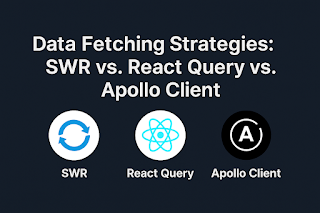Headless eCommerce: How Shopify, Magento, and Commerce.js Work
The eCommerce world is evolving rapidly, and "Headless" architecture is at the heart of that transformation. Traditional eCommerce platforms often tightly couple the front-end and back-end, limiting flexibility, scalability, and customization. Enter Headless eCommerce—a modern approach where the front-end is decoupled from the back-end, allowing businesses to build seamless, personalized shopping experiences across any device or channel.
Let’s explore what Headless eCommerce is, how it works, and how platforms like Shopify, Magento, and Commerce.js enable this model.
What is Headless eCommerce?
Headless eCommerce is a software architecture where the front-end presentation layer (what users see) is separated from the back-end commerce engine (where logic, inventory, and checkout happen).
This decoupling allows front-end developers to use modern tools (React, Vue, Next.js, etc.) to create tailored user experiences while communicating with the back-end via APIs (REST or GraphQL).
Why Go Headless?
- Performance: Faster page loads, optimized user journeys.
- Flexibility: Customize front-end freely without constraints of monolithic platforms.
- Omnichannel: Deliver consistent experiences across mobile, web, POS, kiosks, and more.
- Future-Proofing: Easily swap or upgrade back-end systems without disrupting the UI.
How Popular Platforms Support Headless
1. Shopify (Hydrogen + Storefront API)
- Shopify supports headless setups via its Storefront API and newer Hydrogen framework (built on React).
- Offers GraphQL-based endpoints for fetching product data, managing carts, and checkout.
- Ideal for businesses seeking a high-quality developer experience with strong infrastructure.
Pros:
- Reliable and fast
- Developer-friendly tools (Hydrogen, Oxygen hosting)
- Great ecosystem of apps
Cons:
- Customizations require coding expertise
- API rate limits can be a constraint at scale
2. Magento (Adobe Commerce)
- Magento provides GraphQL APIs and a robust headless setup using PWA Studio.
- Suitable for enterprises needing complex workflows, multi-store setups, or deep integrations.
Pros:
- Highly customizable
- Rich out-of-the-box features
- Open-source flexibility (Magento Open Source)
Cons:
- Steeper learning curve
- Heavier infrastructure requirements
3. Commerce.js (Chec)
- A fully headless-first eCommerce platform built for developers.
- Offers REST and GraphQL APIs, along with pre-built SDKs for JavaScript.
Pros:
- Lightweight and modern
- Fast time-to-market
- Great for small to mid-sized businesses or startups
Cons:
- Less suited for large, complex eCommerce ecosystems
- Smaller ecosystem than Shopify or Magento
When Should You Go Headless?
Consider going headless if you:
- Need custom front-end experiences
- Are scaling globally or across multiple channels
- Want to decouple front-end dev from back-end updates
- Aim to future-proof your tech stack
Headless Architecture in Action
// Fetching products from a headless Shopify store using GraphQL
const query = `
{
products(first: 5) {
edges {
node {
title
handle
images(first: 1) {
edges {
node {
src
}
}
}
}
}
}
}
`;
fetch('https://your-shopify-store.myshopify.com/api/graphql', {
method: 'POST',
headers: {
'X-Shopify-Storefront-Access-Token': 'YOUR_TOKEN',
'Content-Type': 'application/json'
},
body: JSON.stringify({ query })
})
.then(res => res.json())
.then(data => console.log(data));
Final Thoughts
Headless eCommerce is not just a trend—it’s a strategic advantage. Whether you're using Shopify for speed, Magento for power, or Commerce.js for agility, decoupling your architecture opens the door to limitless customization and performance.
If you're planning a future-proof and scalable commerce experience, now’s the time to go headless.
#HeadlessCommerce #Shopify #Magento #CommerceJS #eCommerceDevelopment #Jamstack #WebDevelopment #GraphQL #APIs #ReactJS #FrontendDevelopment #ModernCommerce #TechStack #WebPerformance #DigitalExperience




Comments
Post a Comment